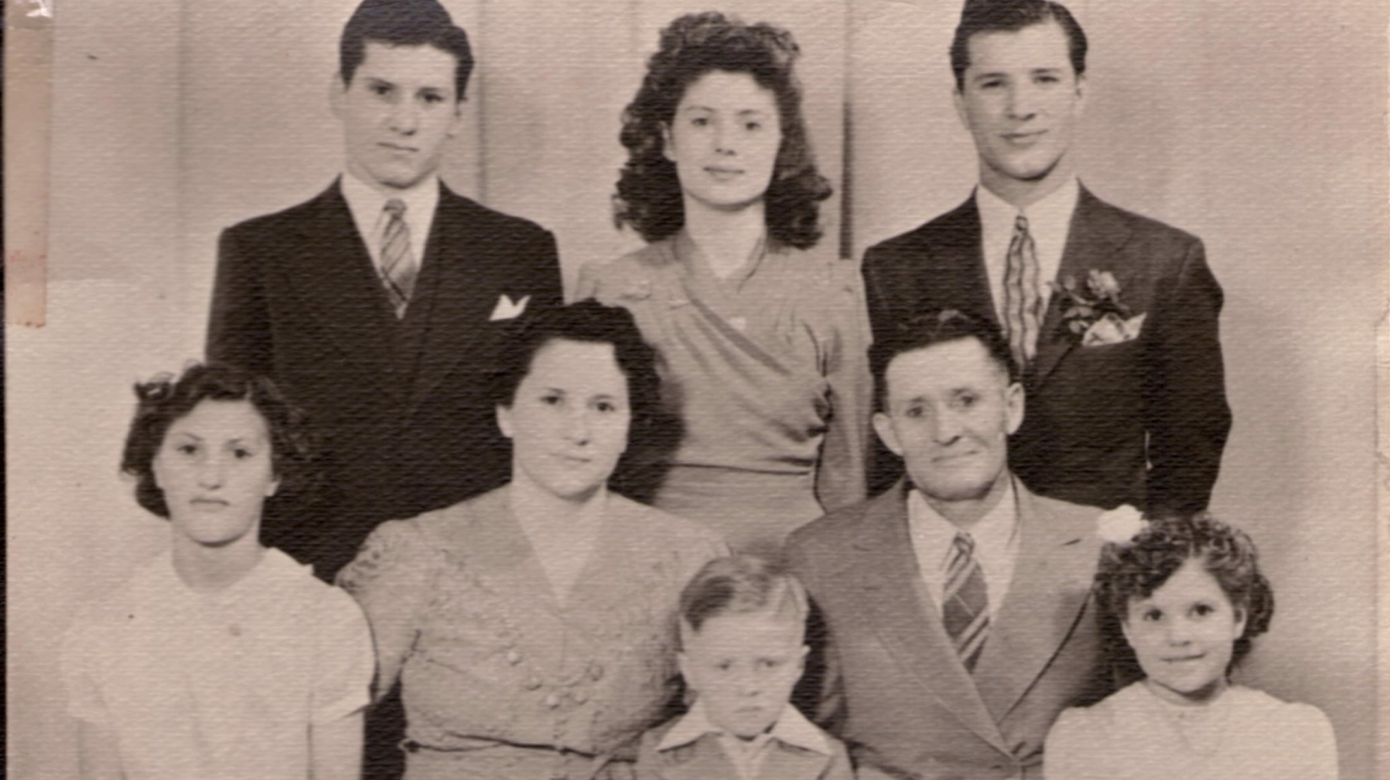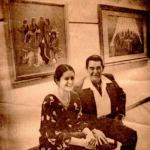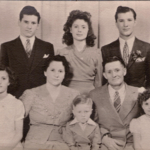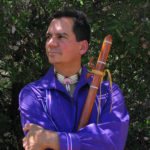The Citizen Potawatomi Nation’s Cultural Heritage Center provides resources to keep the Tribe’s history safe and accessible for generations to come. One key way the Nation does this is through the CHC’s archives. To highlight some of these holdings, the Hownikan is featuring photographs and family history of every founding Citizen Potawatomi family. If interested in assisting preservation efforts by providing copies of Citizen Potawatomi family photographs, documents and more, please contact the CHC at 405-878-5830.
Potawatomi-Crumbo connections
Mary Ann Hurd was born Sept. 30, 1871, in Kansas to Mary Elizabeth Wilmette and John Hurd. Mary Ann was the granddaughter of Wa-wiet-mo-qua and Louis Wilmette. Louis was the son of Antoine Wilmette and Archange Wilmette, known as some of the earliest residents of present-day Chicago, Illinois.
Mary Ann Hurd and Alexander Crumbo — also spelled Krumpe and Krumpol, among other variations — married in 1888. Alexander was the son of John Henry Crumbo, a German stonemason who settled with his family in Indiana.
Alexander and Mary Ann established their home on Mary Ann’s allotment in Indian Territory, near present-day Lexington, Oklahoma. They had 12 children: Amelia Elizabeth, John Henry, Herman, Albert, Edward, Mina Wilhemina, Jessie Belle, Phoebe Dorothy, Theodore Roosevelt, Earnest — also spelled Ernest — Vincent and Woodrow “Woody” Wilson.
Amelia married Walter Daniels in 1909, and they moved to his home state of Utah. Walter was a citizen of the Ute Tribe, and they raised six children: Sylvia Wanda, Lola Christine, Vincent Budger, Phyllis Hazel, Martin Stanley and Geneva Mary.
John Henry passed away as an infant. On Dec. 28, 1917, Herman married Mentora Daniels, sister to Amelia’s husband, Walter. Herman and Mentora had four children: Irving, Daniel, Rose Lee and Hallie (Hal). Hal retired from the military as a lieutenant commander, serving in the Navy during World War II and the Korean War.
Albert married Ruby Gormsby on Oct. 26, 1914, in Utah. They had three children, Bonnie May who passed away at the age of 2, Jeanne Marie and Shirley Lynne. Albert owned Crumbo Motor in Roosevelt, Utah, where he passed away in 1987.
Edward attended Haskell Institute in Kansas and then moved to Sand Springs, Oklahoma, where he met and wed his wife Bertha. Edward continued the family tradition of stonemasonry as well as operated a watch repair business. Their children included Norma Lee, Mary Elizabeth, Carol Ann, Donald Gene, Carl Edward, Isabelle Earlene, Betty Jewel, Myrtle Faye and James Edwin.
Mina Wilhemina married Benjamin Lucas in Lake County, Indiana, on Nov. 21, 1919. They had four children: Teresa, Benjamin, Herman and Albert.
Jessie Belle and Wilbert Monroe Jeffrey wed during the summer of 1929 in Sand Springs, Oklahoma, and they had two children, Wilber E. and Monroe.
In January 1920, Phoebe Dorthy married Dubert Gragg. They established their family in Sand Springs, Oklahoma, where they raised five children: Albert Ray, Ralph Roy, Virginia Louise, Glen Richard and Norma Jean.
Theodore Roosevelt married Letha Delma Hall on Nov. 27, 1926, in Sebastian, Arkansas. They had two children, Betty Eugena and Dora Ann.
On Aug. 3, 1957, Earnest Vincent married Maxine Roberta Roberts.
Mary Ann and Alexander’s youngest son Woody became an orphan at the age of 7. According to family accounts, the Crumbo children had moved away to establish careers and families of their own, making it impossible for him to continue living on the family’s allotment. He moved in with his sister Phoebe Gragg in Sand Springs for some time and lived among other Native American families and communities throughout his youth. Woody attended Chilocco Indian School where he received punishment for “talking Indian” and embracing Native American heritage and culture, eventually leaving the school and its attempt to force assimilation and cultural genocide behind.
Crumbo art
Woody then attended the American Indian Institute in Wichita, Kansas, where his artistic interest grew. While there, he met Susie Peters, who had a profound impact on his career. From 1933 to 1936, he studied at Wichita University — now Wichita State University — and began gaining notoriety for his work. He honed his craft even more as a student at the University of Oklahoma, learning from Oscar B. Jacobson who helped other Native American artists become successful. Afterward, Woody became the art director at Bacone College in Muskogee.
In 1941, Woody married Lillian Hoge,a Muscogee citizen, under a tree on Bacone’s campus. From their marriage, they had two children: Minisa and Woody Max.
Continuing the family legacy, Minisa has established a career as an artist as well as a filmmaker, writer and photographer. Find more information on Minisa and details on her work at minisacrumbo.com.
View some of Woody’s art at CPN’s Cultural Heritage Center, Gilcrease Museum, Philbrook Museum of Art, the Smithsonian Institution, the Fine Arts Museums of San Francisco, the Koshare Indian Museum, the Mid-America All-Indian Museum and more.
CPN members can engage in genealogical research, build family trees and connect with CPN relatives through Mezodanek (family) digital database at portal.potawatomi.org.
If interested in helping preserve Citizen Potawatomi history and culture by providing copies of family photographs, documents and more, contact the Cultural Heritage Center at 405-878-5830.




